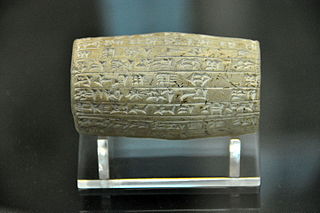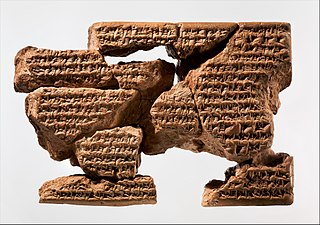Births
| | This section is empty. You can help by adding to it. (August 2013) |
| Millennium: | 1st millennium BC |
|---|---|
| Centuries: | |
| Decades: | |
| Years: |
| 627 BC by topic |
| Politics |
|---|
| Categories |
| Gregorian calendar | 627 BC DCXXVI BC |
| Ab urbe condita | 127 |
| Ancient Egypt era | XXVI dynasty, 38 |
| - Pharaoh | Psamtik I, 38 |
| Ancient Greek era | 38th Olympiad, year 2 |
| Assyrian calendar | 4124 |
| Balinese saka calendar | N/A |
| Bengali calendar | −1219 |
| Berber calendar | 324 |
| Buddhist calendar | −82 |
| Burmese calendar | −1264 |
| Byzantine calendar | 4882–4883 |
| Chinese calendar | 癸巳年 (Water Snake) 2070 or 2010 — to — 甲午年 (Wood Horse) 2071 or 2011 |
| Coptic calendar | −910 – −909 |
| Discordian calendar | 540 |
| Ethiopian calendar | −634 – −633 |
| Hebrew calendar | 3134–3135 |
| Hindu calendars | |
| - Vikram Samvat | −570 – −569 |
| - Shaka Samvat | N/A |
| - Kali Yuga | 2474–2475 |
| Holocene calendar | 9374 |
| Iranian calendar | 1248 BP – 1247 BP |
| Islamic calendar | 1286 BH – 1285 BH |
| Javanese calendar | N/A |
| Julian calendar | N/A |
| Korean calendar | 1707 |
| Minguo calendar | 2538 before ROC 民前2538年 |
| Nanakshahi calendar | −2094 |
| Thai solar calendar | −84 – −83 |
| Tibetan calendar | 阴水蛇年 (female Water-Snake) −500 or −881 or −1653 — to — 阳木马年 (male Wood-Horse) −499 or −880 or −1652 |
The year 627 BC was a year of the pre-Julian Roman calendar. In the Roman Empire, it was known as year 127 Ab urbe condita . The denomination 627 BC for this year has been used since the early medieval period, when the Anno Domini calendar era became the prevalent method in Europe for naming years.
| | This section is empty. You can help by adding to it. (August 2013) |

The 7th century BC began the first day of 700 BC and ended the last day of 601 BC.
The 8th century BC started the first day of 800 BC and ended the last day of 701 BC. The 8th century BC is a period of great change for several historically significant civilizations. In Egypt, the 23rd and 24th dynasties lead to rule from Nubia in the 25th Dynasty. The Neo-Assyrian Empire reaches the peak of its power, conquering the Kingdom of Israel as well as nearby countries.

Babylonia was an ancient Akkadian-speaking state and cultural area based in central-southern Mesopotamia. A small Amorite-ruled state emerged in 1894 BCE, which contained the minor administrative town of Babylon. It was merely a small provincial town during the Akkadian Empire but greatly expanded during the reign of Hammurabi in the first half of the 18th century BCE and became a major capital city. During the reign of Hammurabi and afterwards, Babylonia was called "the country of Akkad", a deliberate archaism in reference to the previous glory of the Akkadian Empire.
This article concerns the period 759 BC – 750 BC.
The year 664 BC was a year of the pre-Julian Roman calendar. In the Roman Empire, it was known as year 90 Ab urbe condita. The denomination 664 BC for this year has been used since the early medieval period, when the Anno Domini calendar era became the prevalent method in Europe for naming years.

The year 700 BC was a year of the pre-Julian Roman calendar. In the Roman Empire, it was known as year 54 Ab urbe condita. The denomination 700 BC for this year has been used since the early medieval period, when the Anno Domini calendar era became the prevalent method in Europe for naming years.
The year 609 BC was a year of the pre-Julian Roman calendar. In the Roman Empire, it was known as year 145 Ab urbe condita. The denomination 609 BC for this year has been used since the early medieval period, when the Anno Domini calendar era became the prevalent method in Europe for naming years.

Nabopolassar was the founder and first king of the Neo-Babylonian Empire, ruling from his coronation as king of Babylon in 626 BC to his death in 605 BC. Though initially only aimed at restoring and securing the independence of Babylonia, Nabopolassar's uprising against the Neo-Assyrian Empire, which had ruled Babylonia for more than a century, eventually led to the complete destruction of the Assyrian Empire and the rise of the Neo-Babylonian Empire in its place.

Ashurbanipal, also spelled Assurbanipal, Asshurbanipal and Asurbanipal was the king of the Neo-Assyrian Empire from the death of his father Esarhaddon in 668 BC to his own death in 631 BC. The fourth king of the Sargonid dynasty, Ashurbanipal is generally remembered as the last great king of Assyria.

Sinsharishkun or Sin-shar-ishkun was the penultimate king of Assyria, reigning from the death of his brother and predecessor Ashur-etil-ilani in 627 BC to his own death at the Fall of Nineveh in 612 BC.

Cyrus I or Cyrus I of Anshan or Cyrus I of Persia, was King of Anshan in Persia from c. 600 to 580 BC or, according to others, from c. 652 to 600 BC. Cyrus I of Anshan is the grandfather of Cyrus the Great, also known as Cyrus II. His name in Modern Persian is کوروش, Kurosh, while in Greek he was called Κῦρος, Kȳros.
Ashur-etil-ilani, also spelled Ashur-etel-ilani and Ashuretillilani, was the king of the Neo-Assyrian Empire from the death of his father Ashurbanipal in 631 BC to his own death in 627 BC. Ashur-etil-ilani is an obscure figure with a brief reign from which few inscriptions survive. Because of this lack of sources, very little concrete information about the king and his reign can be deduced.

Sin-shumu-lishir or Sin-shumu-lisher, also spelled Sin-shum-lishir, was a usurper king in the Neo-Assyrian Empire, ruling some cities in northern Babylonia for three months in 626 BC during a revolt against the rule of the king Sinsharishkun. He was the only eunuch to ever claim the throne of Assyria.
Kandalanu was a vassal king of Babylon under the Neo-Assyrian kings Ashurbanipal and Ashur-etil-ilani, ruling from the defeat and death of his predecessor Shamash-shum-ukin in 647 BC to his own death in 627 BC.
Ashur-uballit II, also spelled Assur-uballit II and Ashuruballit II, was the final ruler of Assyria, ruling from his predecessor Sinsharishkun's death at the Fall of Nineveh in 612 BC to his own defeat at Harran in 609 BC. He was possibly the son of Sinsharishkun and likely the same person as a crown prince mentioned in inscriptions at the Assyrian capital of Nineveh in 626 and 623 BC.

The timeline of the Assyrian Empire can be broken down into three eras: Old Assyrian Empire, Middle Assyrian Empire, and Neo-Assyrian Empire.

The Sargonid dynasty was the final ruling dynasty of Assyria, ruling as kings of Assyria during the Neo-Assyrian Empire for just over a century from the ascent of Sargon II in 722 BC to the fall of Assyria in 609 BC. Although Assyria would ultimately fall during their rule, the Sargonid dynasty ruled the country during the apex of its power and Sargon II's three immediate successors Sennacherib, Esarhaddon and Ashurbanipal are generally regarded as three of the greatest Assyrian monarchs. Though the dynasty encompasses seven Assyrian kings, two vassal kings in Babylonia and numerous princes and princesses, the term "Sargonids" is sometimes used solely for Sennacherib, Esarhaddon and Ashurbanipal.

The Medo-Babylonian conquest of the Assyrian Empire was the last war fought by the Neo-Assyrian Empire between 626 and 609 BC. Succeeding his brother Ashur-etil-ilani, the new king of Assyria, Sinsharishkun, was immediately faced by the revolt of one of his brother's chief generals, Sin-shumu-lishir, who attempted to usurp the throne for himself. Though this threat was dealt with relatively quickly, the instability caused by the brief civil war may have made it possible for another official or general, Nabopolassar, to rise up and seize power in Babylonia. Sinsharishkun's inability to defeat Nabopolassar, despite repeated attempts over the course of several years, allowed Nabopolassar to consolidate power and form the Neo-Babylonian Empire, restoring Babylonian independence after more than a century of Assyrian rule. The Neo-Babylonian Empire, and the newly formed Median Empire under King Cyaxares, then invaded the Assyrian heartland. In 614, the Medes captured and sacked Assur, the ceremonial and religious heart of the Assyrian Empire, and in 612 their combined armies attacked and razed Nineveh, the Assyrian capital. Sinsharishkun's fate is unknown but it is assumed that he died in the defense of his capital. He was succeeded as king only by Ashur-uballit II, possibly his son, who rallied what remained of the Assyrian army at the city of Harran and, bolstered by an alliance with Egypt, ruled for three years, in a last attempt to resist the Medo-Babylonian invasion of his realm.
After the death of Assurbanipal in 627 BC, the Neo-Assyrian empire entered a period of instability caused by fighting between Sin-shar-ishkun and his brother Assur-etil-ilani. In 626 BC, Nabopolassar, the Babylonian ruler revolted against the Assyrians. After a few years of war, the Babylonians expelled the Assyrian forces from their territory. However, Nabopolassar could not bring the fight to the heartland of the Assyrian empire. The situation changed drastically in 616 BC, when the Medes attacked the Assyrian empire. The fall of Tarbisu occurred when the Median army, led by Cyaxares the great, attacked and conquered the city. In the aftermath, the Medes went further and decisively defeated the Assyrians at the battle of Assur.